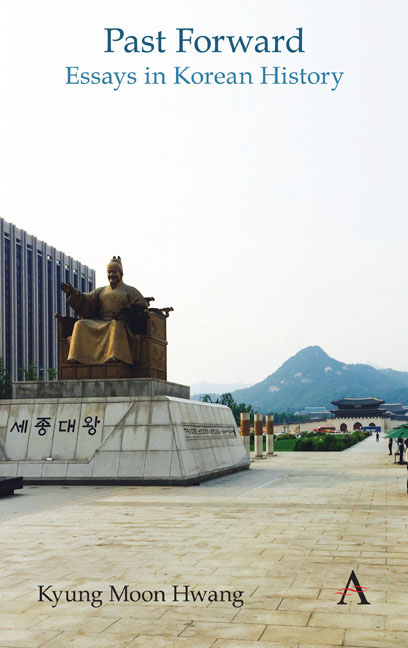Book contents
- Frontmatter
- Contents
- List of Figures
- Foreword
- Chronologies of Korean History
- Themes
- Acknowledgments
- Note on Romanization and Spelling
- Part I Circulating History
- Part II Durable Traditions
- Part III Ancient Remains
- Part IV Dynastic Depths
- Part V Modern Origins
- 24 Jungin, Forerunners to Professionals
- 25 1894, a Signal Year
- 26 Great Korean Empire
- 27 March First Independence Movement
- 28 The Politics of Disease
- 29 Korean Universities
- Part VI Challenges of Nationhood
- Part VII History Makers
- Part VIII External Presences
- Part IX Trials of Modernization
- Part X Gripped by the Past
- Index
27 - March First Independence Movement
from Part V - Modern Origins
- Frontmatter
- Contents
- List of Figures
- Foreword
- Chronologies of Korean History
- Themes
- Acknowledgments
- Note on Romanization and Spelling
- Part I Circulating History
- Part II Durable Traditions
- Part III Ancient Remains
- Part IV Dynastic Depths
- Part V Modern Origins
- 24 Jungin, Forerunners to Professionals
- 25 1894, a Signal Year
- 26 Great Korean Empire
- 27 March First Independence Movement
- 28 The Politics of Disease
- 29 Korean Universities
- Part VI Challenges of Nationhood
- Part VII History Makers
- Part VIII External Presences
- Part IX Trials of Modernization
- Part X Gripped by the Past
- Index
Summary
Every year Koreans commemorate the March First Independence Movement of 1919, celebrated as a testament to the yearning for freedom from Japanese colonial rule. An annual rite to mark the start of spring, solemn observances and colorfully staged reenactments around the country simulate the nationwide eruption of demonstrations back in 1919.
Ironically, March First might actually have represented the last such moment of great unity, bringing together Koreans from all across the peninsula for a single cause. For various reasons, Koreans under colonial rule did not, or could not, organize another concerted action for independence, and as we know, the liberation of 1945 was immediately followed by Korea's permanent division. But while March First did not immediately bring about Korean autonomy, when viewed over the longer term, its historical significance was wide-ranging and monumental, especially in facilitating Koreans’ central role in forging their own modern history.
March First showed the outcome of several decades of schooling and civic discourse concerning enlightenment and social reform, which heightened the sense of national unity as well as the thirst for independence. Throughout the modern world, often it took a common threat or domination by an external force to spark or intensify a sense of national identity, and Korea was no different. It came too late to prevent colonization, but March First showed that Koreans had developed a strong collective consciousness and will.
Such resolve was demonstrated within a month after the uprisings, as independence activists gathered in Shanghai, China in April 1919 to form the first government in exile, which significantly took the form of a republic, not a monarchy. Alas, this unity among the participants did not last long, as soon the independence movement split into disparate groups following competing ideologies and scattered in various locales, from China and Manchuria to even Japan and the United States.
These independent independence movements, however, would eventually cultivate the major political leaders, from Kim Il-Sung to Gim Gu and Syngman Rhee, who would take command over Korea's future course by the middle of the twentieth century. None of them played a major role in bringing about liberation, but their efforts in organizing anti-Japanese resistance movements from their far-flung bases outside the peninsula were enough to endow them with the stamp of nationalist legitimacy.
- Type
- Chapter
- Information
- Past ForwardEssays in Korean History, pp. 78 - 81Publisher: Anthem PressPrint publication year: 2019



